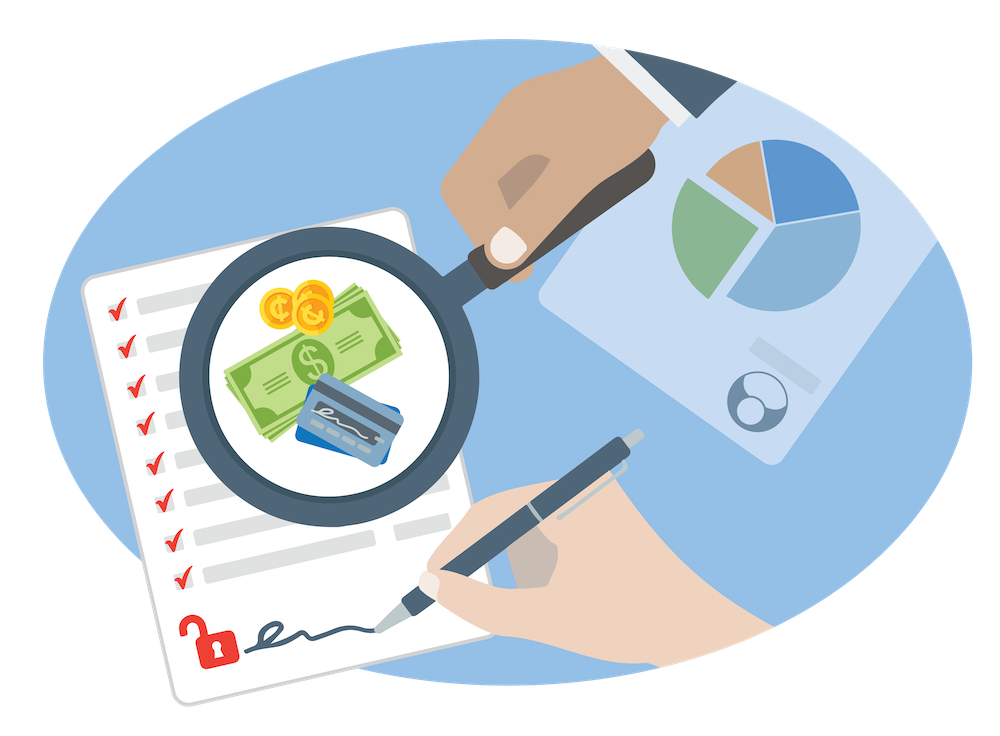Discover Disclosures and Consent Management
Learning Objectives
After completing this unit, you’ll be able to:
- Explain the importance of disclosure and consent.
- Define disclosure and consent.
- Explain the Disclosures and Consent Management feature.
- List the objects of the Disclosures and Consent Management data model.
The Importance of Disclosure and Consent
Rachel and Nigel Adams just adopted an adorable daughter and are in the market for a bigger house to accommodate the growing family.
They contact Sofia Lopez, a mortgage loan officer at Cumulus Mortgages. Cumulus is one of the leading mortgage services providers in the country. Sofia meets the Adams couple to understand their needs so she can find the perfect loan product for them.
During the meeting, Rachel tells Sofia that she’s worried about terms and charges that mortgage lenders secretly slip in between complex agreements.
Rachel is also concerned about her privacy. She wants to know what data Cumulus collects and for what purpose. She doesn’t want her personal and financial information to be misused or exposed.
Rachel’s concerns aren’t unwarranted. Most customers are quite conscious about their privacy these days. Being a leading mortgage lender, Cumulus is aware of this and must ensure a robust disclosures and consent management system.
Cumulus must comply with data protection and privacy regulations as noncompliance could lead to millions of dollars in fines. If there’s a data breach, Cumulus could lose the trust of its customers and their business.
The lack of proper disclosure and consent management affects Sofia’s performance as well. She gets less time to do what she does best: strengthening customer relationships.
Sofia reassures Rachel that Cumulus will take care of her concerns, and reaches out to trusty admin Matt O’ Brien. Matt tells Sofia about a Financial Services Cloud (FSC) feature that could be the perfect solution for her requirements. But before Matt reveals the name to Sofia, let’s discuss some fundamental concepts related to the feature.
Disclosure and Consent: What Do They Mean?
You probably know what disclosure and consent mean but let’s define them anyway.
A disclosure is any information a financial institution is required by regulations or company policy to share with a customer. It describes key product details, terms, or conditions.
Consent is the explicit permission granted by a customer to a financial institution (or partner) so the financial institution can perform specific actions on the customer’s behalf.
An example is a truth-in-lending disclosure sent out to the customer during a mortgage business process. The customer acknowledges that they’ve understood and consented to the terms included in the disclosure.
Introducing Disclosures and Consent Management
Disclosures and Consent Management is an intelligent FSC feature to capture, manage, and track customer consent. The feature is developed keeping both FSC users and their customers in mind.
Loan officers like Sofia spend crucial time and effort building customer relationships and bringing Cumulus business. Instead of pushing papers back and forth, she can launch authorization forms to gather consent using a few clicks. And customers like Rachel experience complete transparency and control over how their data is used. She can study and agree to disclosure policies before starting or continuing a business process.
With Disclosures and Consent Management, Cumulus can ensure compliance with data privacy laws like the General Data Protection Regulation (GDPR) or the California Consumer Privacy Act (CCPA). When a financial institution is transparent and delivers disclosures in a language that's easy to understand, it builds customer trust.
You might think that such an advanced feature must be difficult to set up. Not at all! Admins can easily define the type of disclosures and consent to be shared and collected for a particular business process. Matt explains the feature and its benefits to Sofia and volunteers to set it up for Cumulus. In this module, we look at the feature’s data model and follow along as Matt does the setup.

Explore the Disclosures and Consent Management Data Model
Before Matt proceeds to set up the feature, he spends some time studying the data model and its objects.
-
Data Use Legal Basis: This object identifies the regulation or policy that governs consent and disclosure requirements. For example, Real Estate Settlement Procedures Act (RESPA).
-
Data Use Purpose: This object defines the reason for collecting consent and disclosure information. A Data Use Purpose object can link to a Data Use Legal Basis object for collecting consent.
-
Authorization Form: This object represents the form used to disclose information to a customer and ask for their consent.
-
Info Authorization Request: This object represents a request made to the customer to consent to one or more authorization forms.
-
Multiparty Information Authorization Request: This object tracks a request for multiple parties of authorization on a Data Use Purpose object.
For a complete list of Disclosures and Consent Management data model objects, see the link in the Resources section.
What’s Next
Knowing what Disclosures and Consent Management can offer, Matt and Sofia are excited about the possibilities. In the next unit, follow along as Matt prepares the org for the feature. Let's go!
Resources